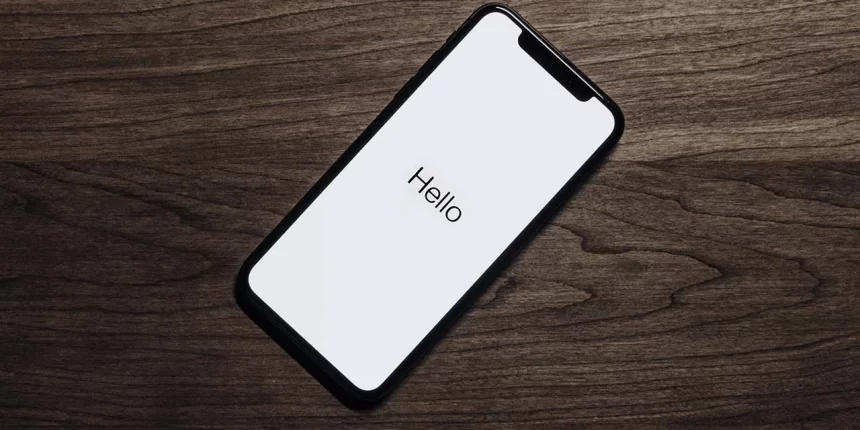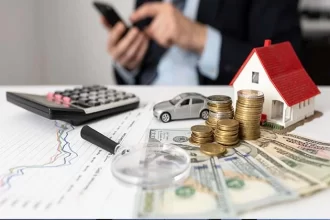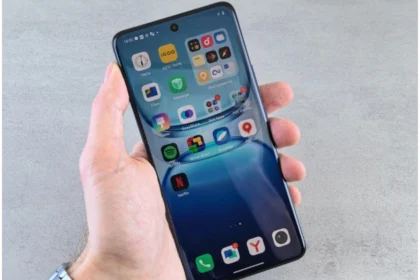M-commerce is rising, roaring with no signs of slowing down. In fact, in the next few years, it is expected that most transactions will be made using mobile devices. Given that, several companies have already switched to the mobile platform to increase their sales, opening up m-commerce routes. The bond of m-commerce and mobile devices is a match made in heaven.
M-Commerce, short for Mobile Commerce, is a commercial division that deals with digital smartphone transactions. It does not require physical contact between two individuals to send or receive the money. In other words, m-commerce is the purchase and sale of goods and services via wireless handheld devices such as smartphones and tablets. M-commerce allows users to access online shopping platforms as a form of e-commerce without using a desktop computer.
Examples of m-commerce:
- In-app purchasing
- Mobile Ticketing
- Mobile Banking Services
- Virtual marketplace apps such as the Amazon mobile app
Types of m-commerce:
M-commerce is classified as mobile purchasing, mobile banking, or mobile payments by function. Mobile shopping allows a customer to buy a product on a mobile device, via an app like Amazon, or via a web app. A mobile shopping subcategory is app commerce, a transaction that takes place through a native app. Any handheld technology that allows clients to conduct transactions is a part of mobile banking.
Typically, this is done via a secure, dedicated app provided by the banking institution. Mobile payments allow users to use a mobile device to purchase products. Digital wallets allow a customer to purchase a product without swiping a card or paying with physical cash, such as Apple Pay. M-Commerce is a vast field that doesn’t end up buying a commodity online-it includes all the behaviors associated with checking your smartphone for any stuff online.
The different types of m-commerce are:
- Browsing on your smartphone for items online- This method deals with browsing online for things like searching for food, everyday essentials, and electronics. It constitutes dedicated applications, customized websites, or even social media channels that allow in-app purchases to online stores.
- Purchasing app-delivery stuff- This form deals with services such as food, cab pickup, and others related to ordering stuff.
- Mobile banking- Mobile banking is the strategy by which online methods can access the bank’s functionality. Some financial services firms are now experimenting with chatbots or messaging systems to provide customer support.
- Mobile App payments– This type focuses primarily on the making of payment transactions via apps. The user is required to register and then use their credit or debit card whenever they want.
- Buying or renting digital content on a mobile device- This includes buying or renting online services such as streaming music, video streaming, or rent-based goods.
- Mobile person-to-person payments- This form includes transferring money from one user to another, whether for buying items or sending them to someone in need. One may make this kind of transaction by directly sending money to someone’s number or bank account.
How does M-Commerce work?
The mobile device is connected to a wireless network and is used to make online product transactions for most m-commerce-enabled platforms. For developing an m-commerce and mobile devices application, the total mobile traffic, the value of orders over time, etc. are essential KPIs to track. Similarly, monitoring the mobile add to cart rate would allow developers to analyze whether visitors become customers. The recording of average page loading times, mobile cart conversion rates, and SMS subscriptions may also be of interest to M-commerce developers.
Regarding mobile payment products, they operate through a form of peer-to-peer (P2P) sharing. If a mobile device is in combination with details from a bank card, it is possible to wave the phone over a payment terminal to pay for a product. Due to the use of Near Field Communication (NFC), this interaction makes fewer payments through a mobile device possible.
Benefits of m-commerce and mobile devices:
- Increases the amount of customer retention by making them readily available
- A more comprehensive range of utilities and goods
- More choices for product selection
- Convenient for the user without the use of a device to compare costs, product reviews, and transactions and a better experience with users
- Multiple payment options, such as credit and debit card payments
Drawbacks of m-commerce and mobile devices:
- The technology needed at the moment to set up M-commerce is very costly. The initial cost of starting a company is very high.
- The network signal is not very good in developed countries, and operators cannot provide good speed. Because of this, it is not sufficient for data transfer.
- While it is very secure these days, there is still a possibility of data leakage and intrusions. There is a security risk.
- A poorly designed app will lead to lower purchase numbers due to consumer dissatisfaction.
- Mobile payments are still not available in many places worldwide.










